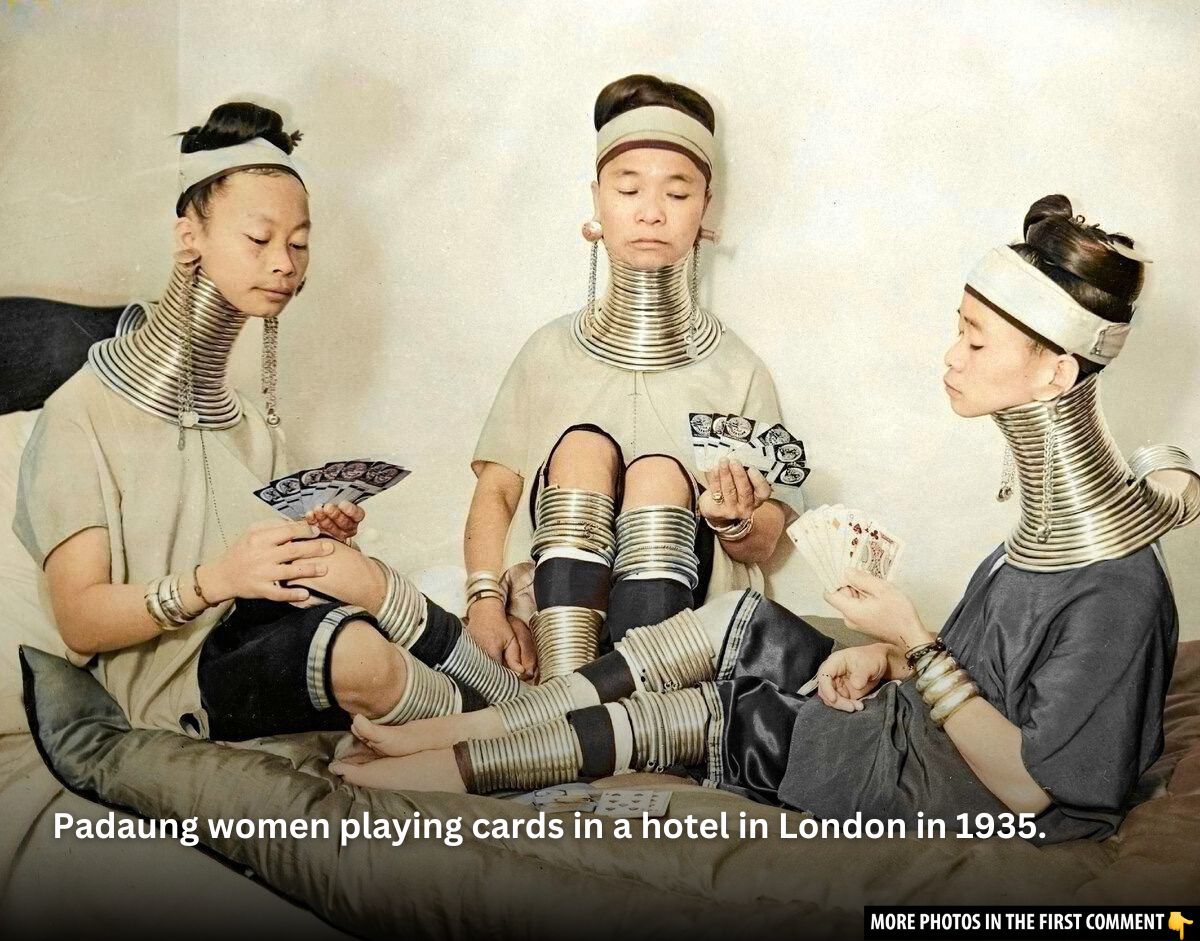In 1935, a group of Padaung women from Myanmar and Thailand made a remarkable visit to London, capturing the fascination of the public with their distinctive neck elongation tradition. Known as the “giraffe women” due to the brass coils they wore from a young age, they became a symbol of cultural intrigue, drawing crowds eager to witness this ancient practice. Their journey not only sparked curiosity but also highlighted the complex intersection of tradition, identity, and perception in a rapidly modernizing world. This historical moment offers a glimpse into a time when cultural exchange was both a spectacle and a chance to challenge societal norms.
The Tradition of Neck Elongation: A Deep Cultural Practice
The practice of neck elongation begins early in the life of a young Padaung girl. Typically starting at the age of five, the girl’s neck is gradually encircled by spirals of brass. The first coil is just a few centimeters tall, and as the girl grows, additional coils are added, pushing the limits of the chest and shoulders to create the illusion of a longer neck. This elongation continues until the girl reaches marriageable age, at which point the neck may be elongated to a length of over 12 inches.

The process of neck elongation is not just a physical transformation; it also carries deep cultural significance. The women who undergo this transformation are often revered in their communities and seen as embodying beauty, grace, and strength. Traditionally, the Padaung people believed that the coils protected women from harm and even shielded them from attacks. This custom served as both an aesthetic and practical function in their society.
Interestingly, the coils, often made of brass, were initially not just for decoration. They also served as a form of protection for the women, keeping them strong, safe, and empowered in the face of potential danger. Over time, the coils became symbolic of a woman’s maturity and role in the community.
Video
Watch this video to explore the extreme beauty tradition of 12-inch necks and the dedication behind it.
The 1935 London Visit: “Giraffe Women” Become an Attraction
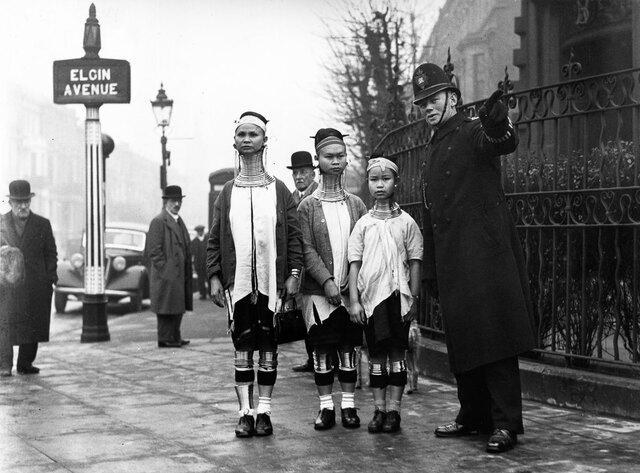
The visit of the Padaung women to London in 1935 was an event that bridged two vastly different cultures. As circuses and exhibitions became popular forms of entertainment in Britain during the 1930s, the concept of “exotic” or “strange” customs was a major draw for audiences. The Padaung women, with their striking neck elongation, were seen as living curiosities, and their inclusion in shows was a way for the public to experience something “otherworldly.”
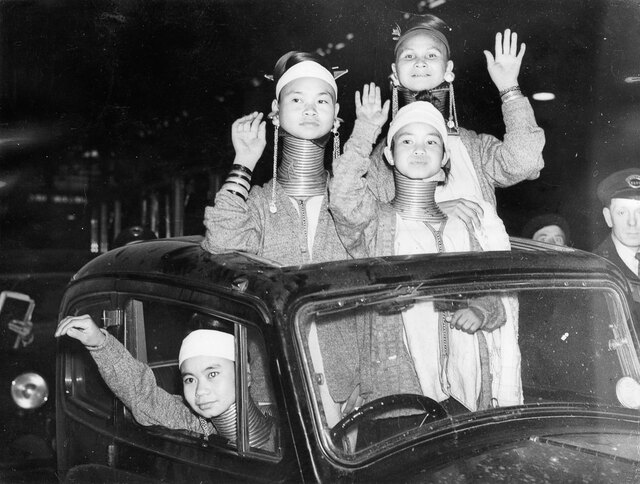
These women, who were often referred to as “giraffe women” due to the distinctive appearance created by their neck rings, became major attractions, sparking debates on cultural appropriation, human exploitation, and exoticism. The media coverage surrounding the visit painted them as a marvel to be witnessed—one that exemplified the fascination with strange and foreign customs in a way that could easily be sensationalized.
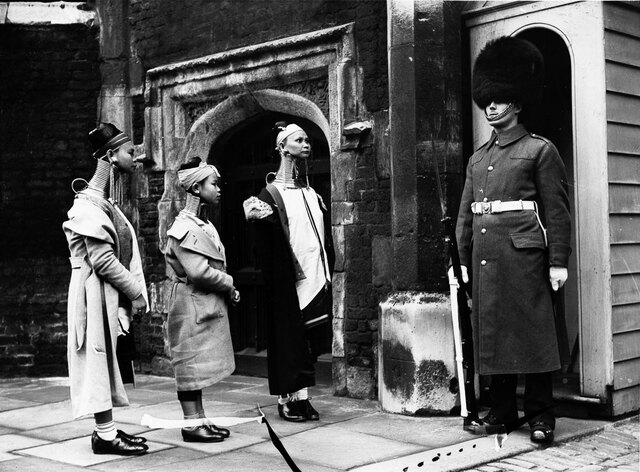
However, the true depth of the tradition remained largely overlooked. To the Padaung women, these acts were not simply an exhibition to be marveled at—they were a rite of passage, a tradition woven deeply into their cultural fabric. Their journey to London was not just a performance; it was an act of sharing their heritage with a wider audience.
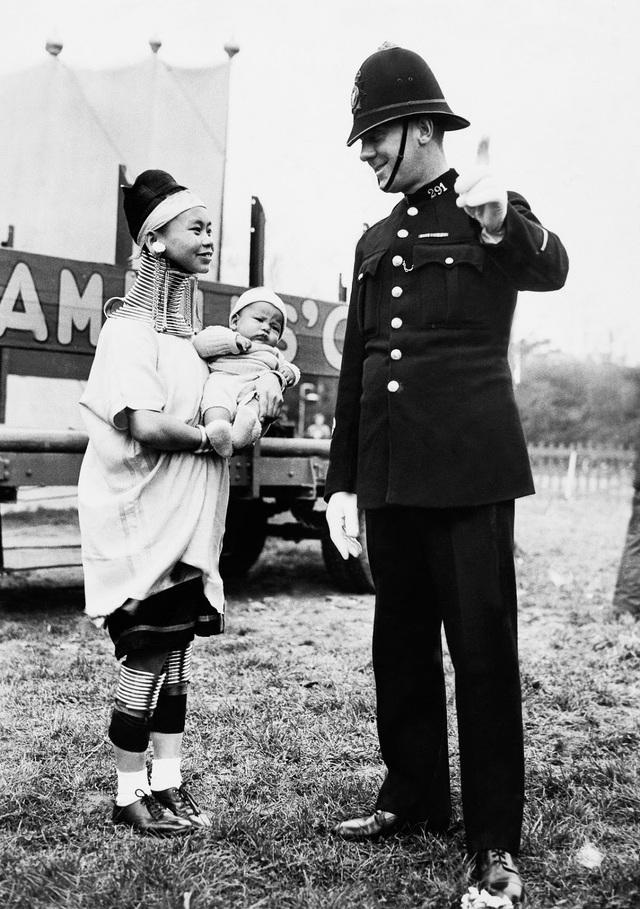
Cultural Exchange and the Encounter with the London Police
A particularly poignant and rare photograph from this event captures the moment when the Padaung women were seen asking a London policeman for directions. This exchange underscores the unfamiliarity the two cultures had with each other and the contrasts in perception. The London policeman, in his official uniform, stood alongside the women with their brass coils and traditional clothing, an image that highlighted the cultural differences yet shared humanity of the moment.
While some of the public’s fascination with the “giraffe women” was undoubtedly shaped by their physical appearance, this exchange between two people from different worlds reflected a deeper cultural encounter. It serves as a reminder of how travel and cultural exchange can challenge preconceived notions about “normal” and “other.” What may have seemed exotic to the British public was simply another facet of a proud cultural tradition for the Padaung people.
The Physical Effects of Neck Rings: A Practical and Symbolic Transformation
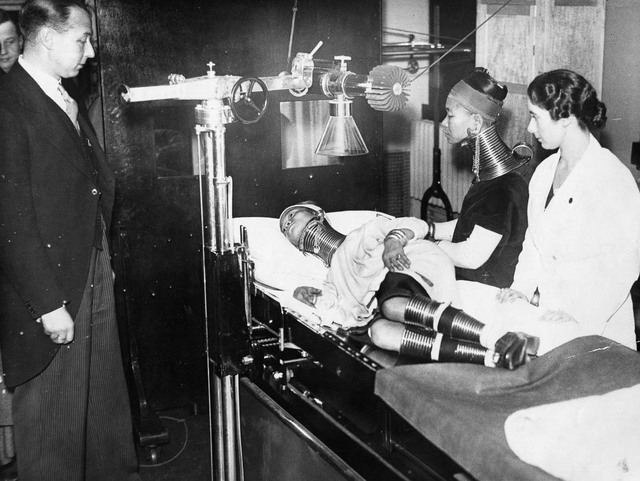
The physical impact of the neck coils was often misunderstood. While many believed the coils literally stretched the neck, the coils instead pushed down on the collarbones and compressed the rib cage, creating the visual illusion of a longer neck. The bones of the neck itself are not stretched, but instead, the muscles under the coils weaken, and the chest and shoulders are altered by the weight of the brass coils.
This transformation, while dramatic, was not without its consequences. The coils were rarely removed, except when a longer one needed to be applied, and the process of uncoiling was time-consuming and difficult. Over time, the weight of the coils had a lasting impact on the body, creating both a physical and psychological bond between the wearer and the tradition. It is a testament to the resilience of the Padaung women that they endured this process for much of their lives, not as an act of submission, but as a mark of strength, identity, and beauty.
The Decline of the Tradition: Changing Times and Modern Influences
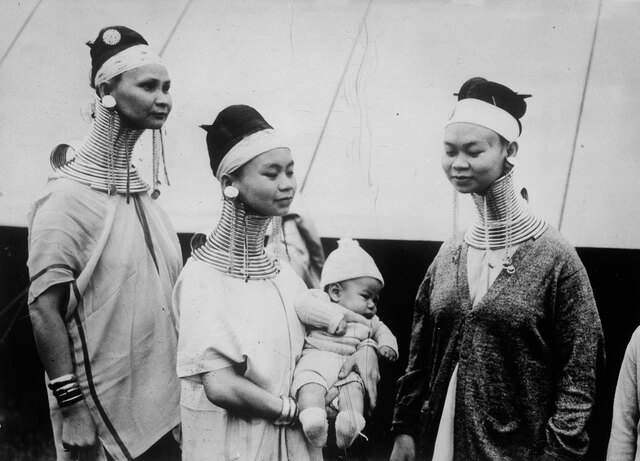
As modernization began to take hold, the tradition of neck elongation began to fade. The arrival of Western values, media influences, and the push for women’s rights in the 20th century made the practice increasingly controversial. Today, the tradition is rarely practiced, with younger generations moving away from the coils, opting for more contemporary lifestyles.
The Padaung women’s visit to London marked a key moment in the intersection of global history and local tradition. While the media sensationalized their appearance, it is crucial to recognize that their culture was never about spectacle but rather about identity and empowerment. The decline of the neck elongation practice is a symbol of how global forces can reshape cultural traditions and values over time.
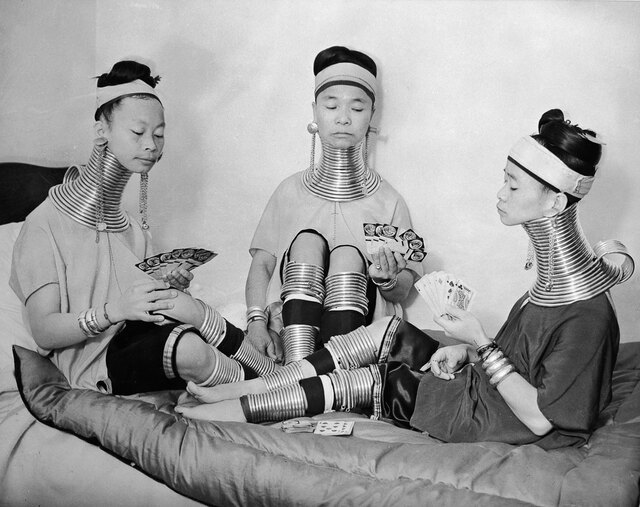
Conclusion: Reflecting on Cultural Perceptions and Practices
The visit of the Padaung women to London remains a moment in history where the beauty of cultural exchange, the complexity of identity, and the power of tradition collided. These women, often seen through the lens of fascination and curiosity, carried with them the stories and traditions of a culture that had been shaped by centuries of history.
In the end, the legacy of the Padaung people, much like any other cultural practice, reflects a deeper understanding of the diversity of human existence. While their neck rings may no longer be a common practice, the bond between the women and their traditions will forever be part of their story. The encounter in London in 1935 is an unforgettable reminder that the beauty of cultures often lies in their unique practices, and it is through such exchanges that we begin to understand and appreciate the complexities of human history.
Video
Watch this video to learn why these women stretch their necks, as explained by National Geographic!
